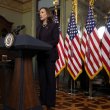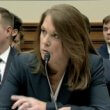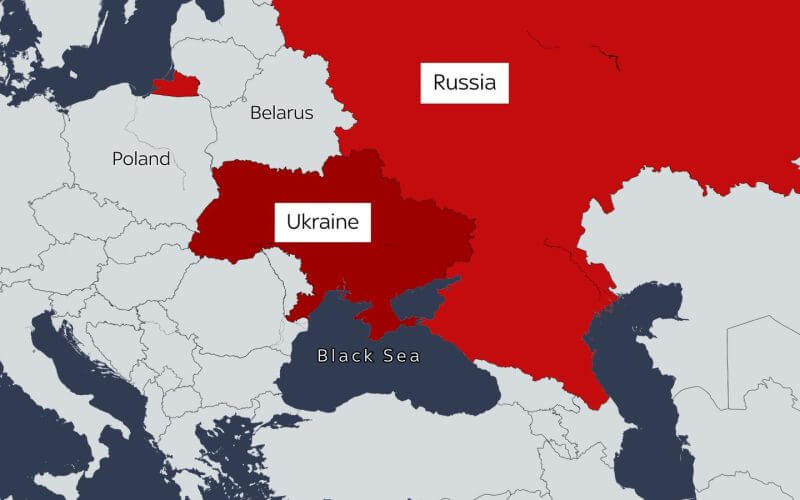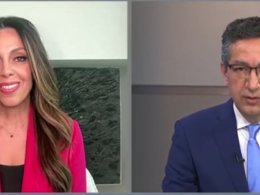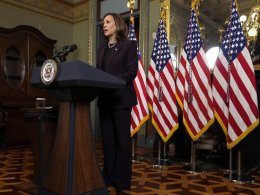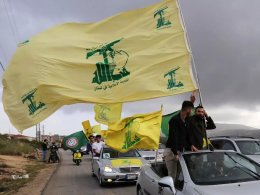Take a look at the history of conflict between Russia and Ukraine over the last 30 years. In the timeline below, you will see the detailed interactions and events that led to the current escalations between the two nations.
- August 25, 1991: After an attempted coup in Moscow, Ukraine declares its independence.
- 1990s: Following the collapse of the Soviet Union, about 250,000 Crimean Tatars and their descendants return to Crimea after deportation to Siberia and Central Asia by Stalin in 1944.
- 1996: Ukraine adopts a new, democratic constitution.
- May 2002: The Ukrainian government announces their decision to launch a formal bid to join NATO.
- November 2004: The leader of the Ukrainian opposition, Viktor Yushchenko, launches a mass protest, dubbed the Orange Revolution, over rigged elections that resulted in the victory of Viktor Yanukovych, a pro-Russian candidate. The Ukrainian Supreme Court later annulled the polls result.
- December 2005: After winning the December election re-run, Viktor Yushchenko wins the presidency. As a result, relations between Ukraine and Russia worsen, which leads to routine disputes over pipeline transit fees and gas supplies.
- February 2010: In the second round of the presidential election, Viktor Yanukovych is declared the winner of the presidential election.
- June 2010: The Ukrainian parliament votes to abandon their aspirations for NATO membership.
- November 2013: Thousands of protestors take to the streets in Kyiv in the “Euromaiden” protests to protest Viktor Yanukovych’s and the Ukrainian government’s decision to abandon plans to sign an association agreement with the EU in favor of creating closer ties to Russia. Protestors blame this decision on Russian pressure.
- February 2014: Protests continue to spread across Ukraine, and security forces kill at least 77 protestors in Kyiv. President Viktor Yanukovych is impeached through a vote by the Ukrainian parliament, but Yanukovych flees to Russia upon the the government’s issuance of a warrant for his arrest. He decries his removal as a “coup.”
- February 2014- March 2014: Russian forces annex Ukraine’s Crimean peninsula and seize the regional and government buildings. This prompts the biggest East-West showdown since the Cold War. The United States and the EU impose harsher sanctions on Russia in response to the annexation.
- March 2014: After two weeks of Russian occupation, the regional parliament holds a referendum on the status of Crimea. Over 95% vote in favor of joining the Russian Federation, prompting Russia to sign a treaty with Crimean leaders to annex the Crimean peninsula formally.
In response, leaders of the G8 remove Russia from the bloc, which is now known as the G7. In a non-binding resolution adopted by the UN General Assembly, the annexation of Crimea is declared illegal.

- April 2014: Pro-Russian armed separatist militants seize the Donbas region in Eastern Ukraine, near the Russian border. The militants are believed to be supported by the Russian government, though Moscow denies any involvement. The Ukrainian government launches a military operation in response.
- March 2014- December 2014: Throughout the year, Stephen Harper, the then-Canadian prime minister, announces numerous sanctions that affect Russian and Ukrainian companies and individuals that were involved in the annexation of Crimea and the armed separatist movement in the Donetsk region. Russia imposes entry bans on 13 Canadian lawmakers and officials in response.
- May 2014: Petro Poroshenko wins the Ukrainian presidential election using a pro-Western platform.
Sign Up for Lisa's Top Ten to stay for updates on the conflict between Russia and Ukraine each morning. Start your free trial today.
- July 2014: Pro-Russian forces shoot down a Malaysian airliner over the conflict zone in eastern Ukraine, resulting in the deaths of all 298 people on board the aircraft.
- September 2014: NATO confirms that Russian troops and heavy military equipment are entering eastern Ukraine.
- October 2014: Ukrainian parliamentary elections result in a majority of pro-Western parties
- February 2015: As a result of Germany and France brokering a new Donbas deal during talks at Belarus, a tenuous ceasefire is reached.
- September 2015: Canada begins Operation UNIFER, sending around 200 Canadian Armed Forces (CAF) to Ukraine every six months to assist the Security Forces of Ukraine with military training. The CAF members are expected to remain in Ukraine until March 2022.
- June 2016- March 2021: More Russian and Ukrainian companies and individuals are added to Canada’s sanctions list, resulting in 440 individuals and entities being affected so far.
- July 2016: The Canada-Ukraine Free Trade Agreement is signed, which begins in August 2017.
- July 2017: All signatories ratify Ukraine’s association agreement with the EU, which comes into force on September 1, 2017.
- May 2018: President Vladimir Putin of Russia officially opens a bridge that links southern Russia to the Crimean peninsula. Ukraine calls this action illegal.
- October 2018: The Ecumenical patriarch of Constantinople allows Ukraine to set up its own Orthodox Church that is independent of Russian ecclesiastical supervision.
- July 2019: Volodymyr Zelensky, a television actor and comedian, is elected as the President of Ukraine in a landslide vote over the incumbent, Petro Poroshenko. His party, the Servant of the People Party, wins early parliamentary elections.
- September 2019: Whistleblowers allege that then-U.S. president Donald Trump froze US$400 million in security aid for Ukraine in an attempt to coerce of Ukrainian president Zelensky to investigate Trump’s political rival Joesph Biden and his family for damaging information, embroiling Ukraine in a U.S. impeachment row.
- September 2019: Ukraine and Russia swap prisoners captured in the wake of Moscow’s seizure of Crimea and intervention in the Donbas.
- February 2021: The United States accuses Russia of blocking a solution to the Russia-Ukraine conflict, and U.S. President Joseph Biden states that the United States will “never” accept Russia’s annexation of Crimea.
- March 2021: EU President Charles Michel announces that the EU will maintain its sanctions on Russia.
- April 2021: Ukraine denounces an upsurge of violence in the country, and Russia claims that it fears a “full-fledged war” in the region.
- October 2021- December 2021: Satellite imagery shows Russia begins moving troops and military equipment near the Russia-Ukraine border, reigniting concerns of a potential Russia invasion. Further satellite imagery and social media posts show armor, missiles, and other heavy weaponry moving towards Ukraine with no official explanation from Moscow.
- December 2021: More than 100,000 Russian troops were placed near the Ukrainian border. U.S. intelligence officials warn of a potential Russian invasion of Ukraine planned for early 2022
- December 7, 2021: U.S. President Biden speaks with Russian President Putin in a video call, warning of economic sanctions should Russia invade Ukraine.
- December 2021: The Russian foreign ministry issues a set of demands, which include a ban on Ukraine joining NATO and a reduction of NATO troops and military equipment in eastern Europe, in order for Russian military forces to be withdrawn from the Ukrainian border. The United States and other NATO allies reject these demands and warn Russia of retaliation in the form of further economic sanctions if Ukraine is invaded. Other assistance is deployed to Ukraine, including defensive weaponry and small arms.
- January 2, 2022: U.S. President Biden promises, in a call with Ukrainian president Zelensky, that the United States and U.S. allies will act “decisively if Russia further invades Ukraine.”
- January 7, 2022: The foreign ministers of countries in NATO meet to discuss the Russian buildup on Ukraine’s border and their upcoming meeting with Russia.
- January 10, 2022: U.S. Deputy Secretary of State Wendy Sherman begins negotiation with Russian counterpart Sergei Ryabkov over the military buildup on the Ukrainian border and on Russia’s security demands from Western countries. Both sides dismissed expectations of a breakthrough before the meeting began.
- January 12, 2022: Delegates from NATO countries and Russia meet in Brussels over Russia’s military buildup of the Ukrainian border
- January 13, 2022: OSCE meets for the third time that week to discuss diffusion tensions between Russia and Western countries.
- January 13, 2022: A cyberattack bringing down several Ukrainian government websites and displaying a message stating that Ukrainians should “be afraid and expect the worst” occurs in the night and is believed to have been executed by Russia.
- January 14, 2022: Russian Foreign Minister Sergei Lavrov states that Russia wants a written response to its security demands from the U.S. and NATO
- January 18, 2022: A bipartisan group of U.S. senators met with Ukrainian President Zelensky to show solidarity with Ukraine and warn against Russian aggression.
- January 19, 2022: U.S. Secretary of State Antony Blinken meets with Ukrainian President Zelensky in Kyiv and called on Russia to maintain “a diplomatic and peaceful path” amid mounting fears of a Russian invasion of Ukraine.
- January 19, 2022: U.S. President Biden claims that Russian President Putin will likely “move in” on Ukraine. White House Press Secretary Jen Psaki says that any kind of Russian invasion will be met by a “swift, severe, and united response” from the U.S. and its allies.
- January 20, 2022: A State Department official claims that Washington D.C. greenlit a transfer of U.S. weaponry from the Baltic countries to Ukraine.
- January 21, 2022: Talks occur in Geneva between U.S. Secretary of State Antony Blinken and Russian Foreign Minister Sergei Lavrov that weigh possible negotiated outcomes to security tensions in Eastern Europe.
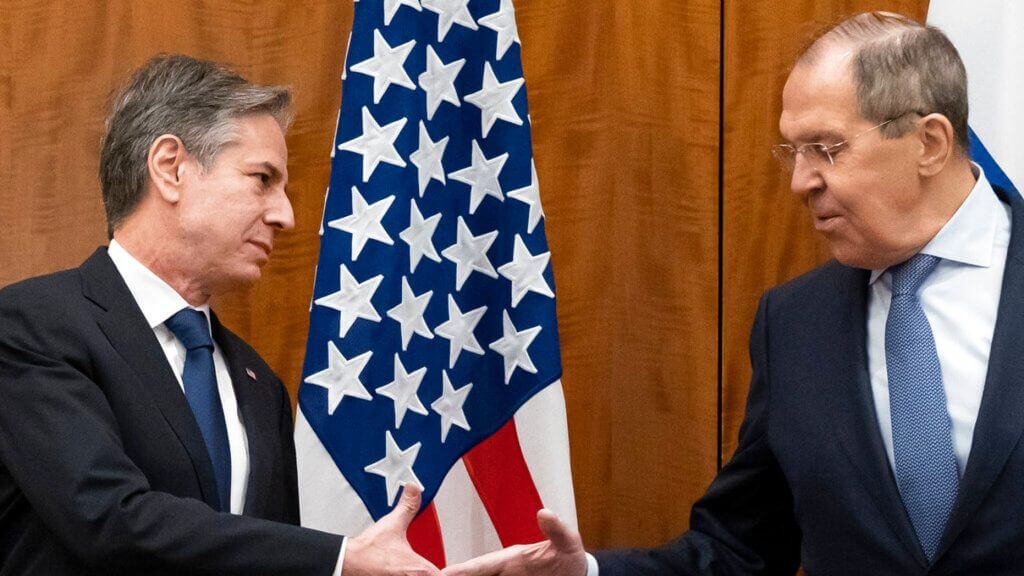
- January 21, 2022: Ukraine’s military intelligence states that Russia is increasing arms shipments to the separatist-controlled areas in eastern Ukraine as Russian foreign minister Lavrov told reporters that Russia has “no plans” to attack Ukraine. U.S. President Joe Biden states that “if any Russian units move across the Ukraine border,” it will trigger a severe economic response.
- January 22, 2022: Canada offers Ukraine a $120 million loan aimed at bolstering Ukraine’s economy. PM Trudeau of Canada also claims that Canada is looking into expanding its UNIFER mission to provide “defensive weapons and equipment” and imposing more sanctions on Russia.
- January 23, 2022: U.S. President Biden considers deploying several thousand US troops, warships, and aircrafts, to NATO allies in the Baltics and Eastern Europe after senior Pentagon officials presented Biden with military options to shift military assets closer to Russia
- January 23, 2022: The British government has claimed in a public statement, backed by U.S. officials, that Russia appears to be developing plans to install a pro-Moscow leader in Ukraine.
- January 23, 2022: The State Department orders family members of U.S. Embassy personnel in Kyiv to leave Ukraine.
Sign Up for Lisa's Top Ten to stay for updates on the conflict between Russia and Ukraine each morning. Start your free trial today.



